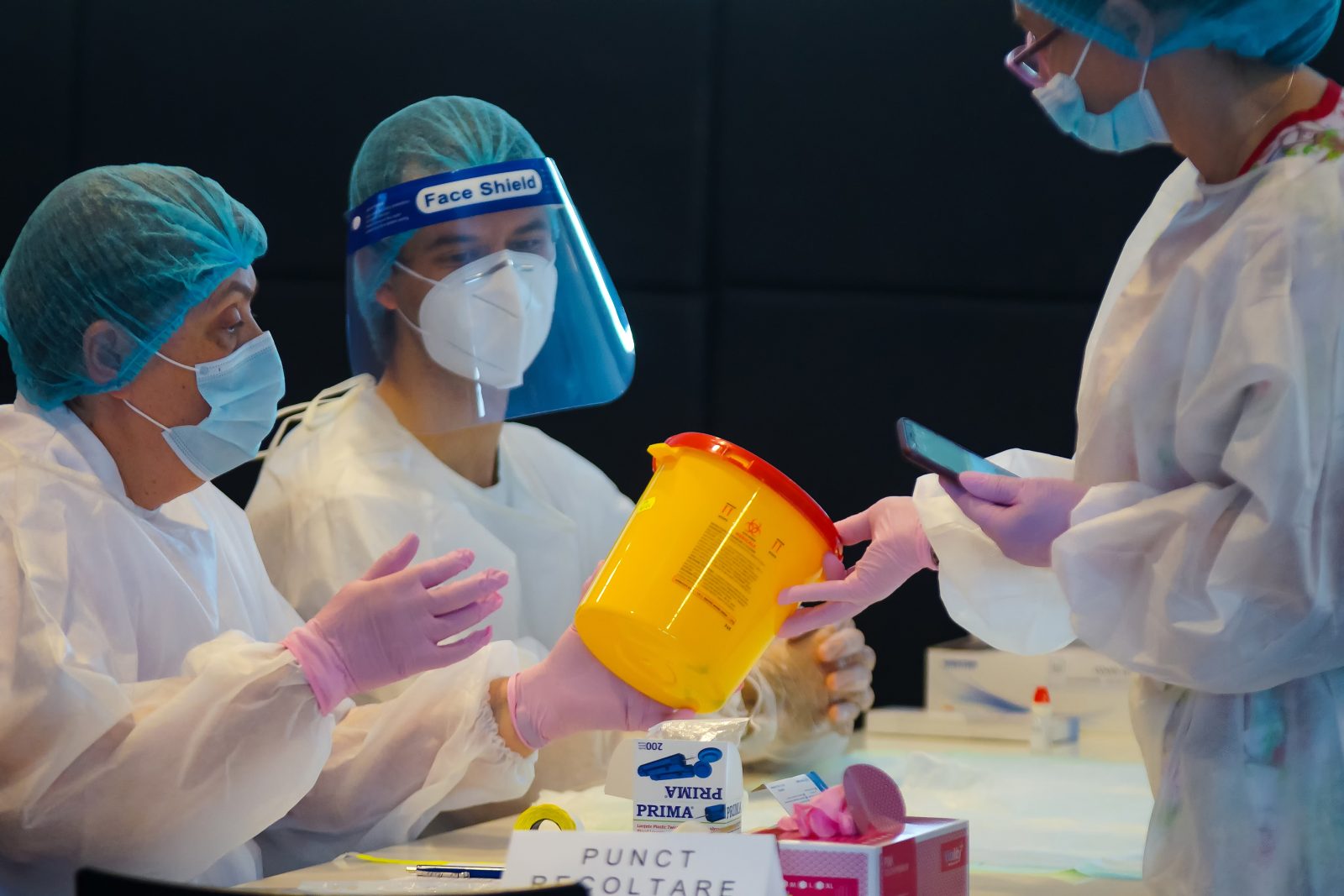The Prevention and Handling of Hazardous Materials in Healthcare course will educate healthcare staff on how to minimize their risk of exposure to hazardous materials.
Healthcare is currently the fastest-growing sector of the United States’ economy, with over 18 million healthcare workers. Healthcare workers experience a wide range of occupational hazards, including sharps injuries, harmful exposures to chemicals and drugs, and other physical injuries or reactions.
Even though steps can be taken to prevent exposure to the hazards, healthcare workers will always face risks of injury or illness in the workplace. The healthcare sector experiences the greatest number of cases of nonfatal occupational injuries and illnesses.
What You’ll Learn
- Healthcare worker hazardous materials risks
- Overview of hazardous drug exposures
- Common chemical hazards in healthcare
- Hazard Communication Standard
- How to control exposure in the workplace
Details
Course length: 45 minutes; CME 0.75
Languages: American English
Key features: Audio narration, learning activity, and post-assessment
ACCME Accreditation
American Medical Compliance is accredited by the Accreditation Council for Continuing Medical Education (ACCME) to provide continuing medical education to physicians. Our Continuing Medical Education (CME) program is committed to enhancing the knowledge, skills, and professional performance of healthcare providers to improve patient care outcomes. Through high-quality educational activities, we aim to address the identified educational gaps and to support the continuous professional development of our medical community. American Medical Compliance designates this activity for a maximum of 0.5 AMA PRA Category 1 Credits. Physicians should only claim this credit for their complete participation in this activity.
Get Certified
American Medical Compliance (AMC) is a leader in the industry for compliance, Billing, and HR solutions. To become certified, please visit us at American Medical Compliance (AMC).
Reach out for other courses by visiting the AMC Course Library.
Hazardous Materials in Healthcare Facilities
There are many different types of chemicals and chemical materials in healthcare facilities that can pose health hazards or physical risks. These chemicals have many common uses within the healthcare industry, including treatment for patients and cleaning/disinfecting surfaces and supplies. There are also certain surgical devices that contain chemical substances.
Surgical smoke is generated by the lasers and electronic devices used during surgical procedures, and it contains many chemical substances. Therefore, there is a wide range of hazardous materials present within the healthcare field. For more information on the types of hazardous materials used in healthcare facilities, please take this course.
Hazardous Exposures
Healthcare workers who commonly use hazardous drugs, such as those used for cancer therapy or virus treatment, may be exposed to hazardous agents in the workplace. Additionally, other workers who frequently do tasks in areas where these drugs are used may be at risk. Nearly 8 million healthcare workers in the United States have had potential exposure to hazardous materials. Specifically, pharmacy personnel, nurses, physicians, and operating room staff have a high risk of exposure. Exposure to hazardous drugs can cause adverse health effects in workers. These symptoms may be both acute and chronic. Some common health effects include skin rashes, adverse reproductive outcomes, and cancer. There are several ways that facilities can help protect their workers from exposure to hazardous drugs. In particular, engineering controls, administrative controls, and personal protective equipment can protect healthcare workers from dangerous exposures.
Chemical Hazards
Chemical substances are considered hazardous when they have the ability to create physical or health risks. Here are some facts regarding chemical properties and exposure:
There are several properties to consider regarding hazardous chemical substances. In particular, these substances may be toxic, explosive, or flammable. Healthcare workers can become exposed to these substances in a variety of ways. For example, inhalation and dermal absorption are two common methods of exposure that can lead to adverse health effects.
Therefore, it is crucial that all workers understand chemical hazards before working with the substances. This training describes several safety considerations for healthcare workers that commonly use these types of hazardous materials.
Healthcare workers should understand the risks of a chemical before beginning to use it. Information regarding a specific chemical can be found on the label or protection datasheet. Safety guidelines and chemical warnings must always be followed strictly. This includes the proper use of personal protective equipment (PPE). By following sensible and healthy work procedures, healthcare workers can minimize the dangerous effects of hazardous materials.
Responding to Emergencies
Information on chemical agents is necessary to follow proper emergency protocol when a chemical incident occurs. There are several information databases that include criteria on the purposes of chemicals, how exposures occur, and the health effects associated with exposure.
These databases are extremely useful for healthcare providers. One can easily find information on a chemical by searching its name, properties, or physical descriptions. This training provides more in-depth information on how to respond in emergency situations.
Hazard Communication Standard (HCS)
As mentioned previously, chemicals can pose a wide range of hazards, including irritation, sensitization, and flammability. OSHA has released a Hazard Communication Standard (HCS) to ensure that appropriate information on hazardous materials is disseminated. This standard requires that all chemical manufacturers evaluate the hazards of the chemicals they are producing. Additionally, this information must be provided through labels and material safety data sheets. Therefore, the HCS is very helpful for healthcare workers in minimizing chemical incidents.
The HCS gives healthcare workers the proper information on chemical hazards and identities. This allows employees to take better actions to protect themselves against hazardous materials. Employers can use the information from the HCS to design an effective protective program for employees who have been exposed to workplace hazards. Moreover, this standard will reduce the number of illnesses and injuries due to chemical hazards in the workplace.
HCS and Chemical Safety
In order to maintain chemical safety in the facility, workers must have all of the necessary information regarding chemical hazards and identities. OSHA’s HCS requires that chemical manufacturers and importers disseminate this information to healthcare staff. This is typically done via labels on the chemicals themselves or safety data sheets that come along with the chemical. Labels and safety data sheets are important aspects of maintaining a hazard-free workplace.
Healthcare workers must have appropriate training in chemical handling. Therefore, it is important to educate your staff on the HCS, especially as updates are made. Recently, OSHA provided specific criteria for the classification of health and physical hazards and standardized chemical labels. Each of these components of the HCS helps to maintain worker health and safety.
Protecting Healthcare Workers
One way to protect healthcare personnel from occupational hazards is by controlling exposure. Typically, a hierarchy of controls is used to effectively implement procedures in the workplace. This hierarchy allows for multiple strategies to be put in place concurrently.
The hierarchy of controls includes several elements. These are elimination, substitution, engineering control, administrative control, and personal protective equipment.
This course details common hazard prevention and control strategies used in healthcare facilities. It is very important for all healthcare settings to implement general hazard prevention and control plans to keep workers safe.
Personal Protective Equipment for Hazardous Materials
Personal protective equipment (PPE) is a main strategy that healthcare workers use to protect themselves from hazards. PPE can help protect workers from physical, chemical, and biological hazards. Common routes of exposure include inhalation and dermal contact. Therefore, protective equipment includes methods to prevent exposure from occurring. Common pieces of PPE are respirators, eye protection, and protective clothing.



